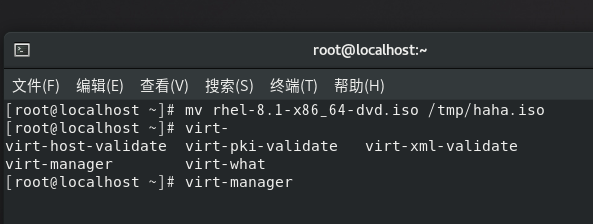

The remote host requires a version of netcat/nc which supports the -U option. If the virt-manager client complains about:

Virsh -c qemu:///system net-edit0 default If the default network complains about some interface taking the default subnet, reassign the default network ip range: Virsh -c qemu:///system net-start default If dnsmasq is missing on the server side: Umount /target/sys /target/dev /target/procįunctional libvirt server side (debian) install.Īpt install -no-install-recommends qemu-kvm libvirt-clients libvirt-daemon-system qemu-utils Replace `GRUB_CMDLINE_LINUX=""` with `GRUB_CMDLINE_LINUX="console=ttyS0"`, and uncomment `GRUB_CONSOLE=serial`.Įxecute the following, and finish the installation. To make future boots use the serial consoel, mount the virtual file systems under `/target` and chroot into it: Pess `TAB`, and replace `- quiet` with `console=ttyS0 vga=none`.īefore you finish the installation, go back to menu, and choose `Execute a shell`. Upon menu splash, don't install just yet. cdrom /var/lib/libvirt/images/debian-10.4.0-amd64-netinst.iso \ qemu-commandline="-fw_cfg name=opt/com.coreos/config,file=$HOME/test.ign" **Container:** This option is very restricted in terms of hardware control but requires much less machine resources compared to the previous two.Ĭompile it to the `ignition` file `test.ign` via: **Virtual Machine:** Provision a virtual environment in the OS that is currently running to run a full Linux system *as if* a program.ģ. **Bare-Metal:** To boot directly into Linux, making it the OS running directly on one's machine.Ģ.


One is naturally presented with three choices: bare-metal, virtual machine, container.ġ. Most end-user machines (PC, laptop) run Windows or MacOS out of the box, but it always comes the day when one has to run a full-fledged Linux system be it to study operating systems, to run specific programs that are treated as second-class citizens on Windows and MacOS, or to simply chuang-bi.


 0 kommentar(er)
0 kommentar(er)
